Shirma is the history of the emergence, modern use options, as well as materials from which shirms are manufactured.
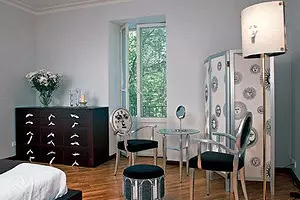
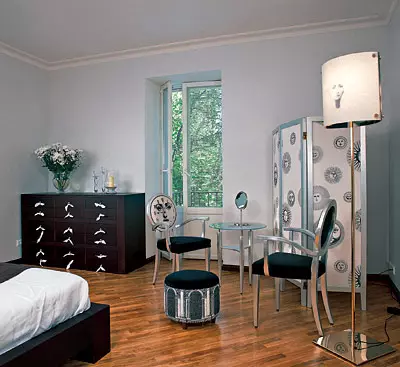
A typical version of the desktop Indian width of handmade from the "Interiors of Maharaji" gallery. The floral ornament is made by organic paints


LOCSIN INTERNATIONAL LOCSIN INTERNATIONAL (Philippines). Window can be used as a shelf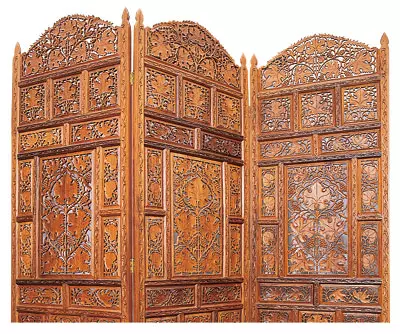
Wooden carved Shirma from Tika, made by Thai masters from the gallery "Zen Art" (Russia)
Wooden Chinese shirma with sophisticated painting and metal inserts. It may well become one of the main exhibits of your collection of painting and charts.
The taste of the chosen shirma will help to create a single harmonious ensemble or, on the contrary, will enter the interior of a light dissonance and notch intrigue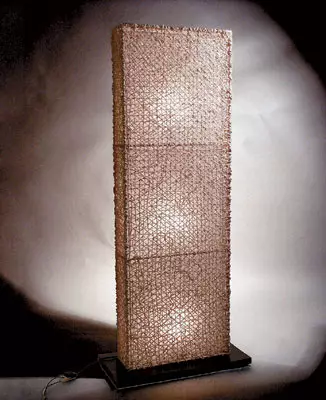
Such a design can always be turned off from the network, and then it will turn out of the light shell in simply shirma
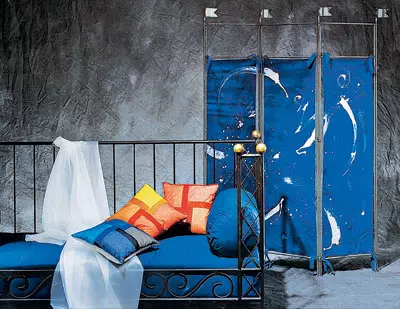

Unexpectedly avant-garde interpretation of concise Japanese forms embodied in shirms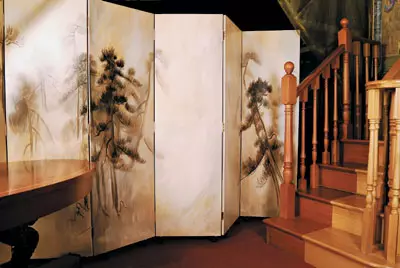
Eastern softness of painting and to this day lies artists to all sorts, sometimes unexpected interpretations

With a series of materials from Javana (Germany), you can independently create a unique screen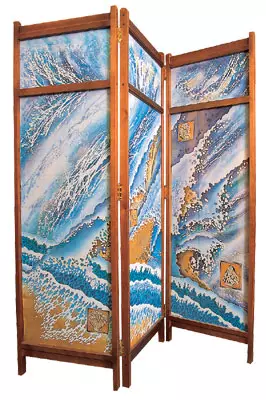
Shirma, made in the technique of "hot batik", from the artist on Silk Natalia Alekseeva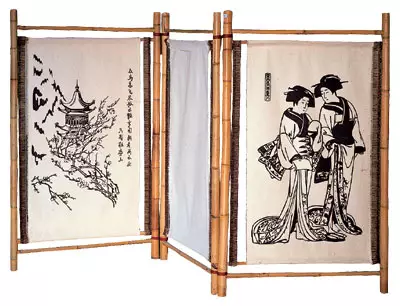
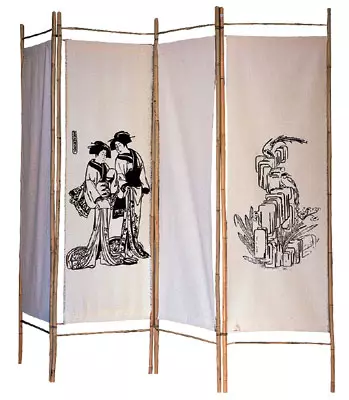
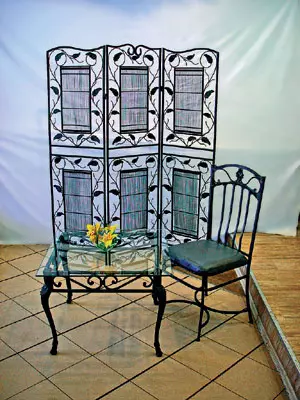
Wanted Shirma in Chinese from Danhvi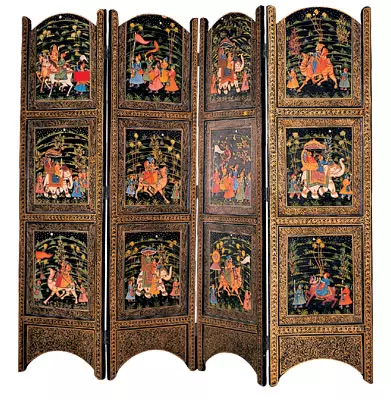
The original fragment of the colorful, colorful world of India, embodied by artists in the four-part painstakingly painted Shirma from the "Interiors Maharaj" gallery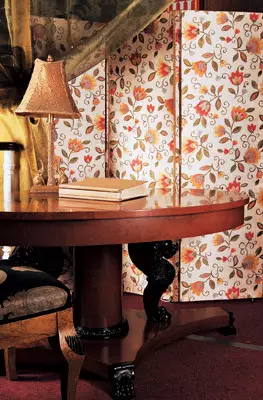
Shirma from A. Matlin
Fragment of Shirma from Tika from "Taiwood" (Russia)
Shirma from "Interiors Maharaji"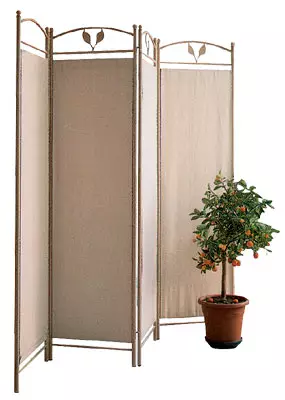
Similar romantic shirma from Resistub (France) perfectly fit into the interior performed in the spirit of French Provence
In the Roman Agatha Christie Shirma had invaluable assistance to investigation. As for the object of almost a detective investigation will be she herself. Immediately alleged: it will be mainly about the traditional shirma folding harmonica.
- Shirma, which covered the door to the bedroom - so so
There were no drafts. She was slightly shifted.
- So? - Poiro immediately moved shirma.
- To the left, sir ... That's how.
Shirma, previously only half hiding the chest,
Now closed it almost completely.
- What do you think, why was Shirma?
Agatha Christie. Mystery of the Spanish Chest
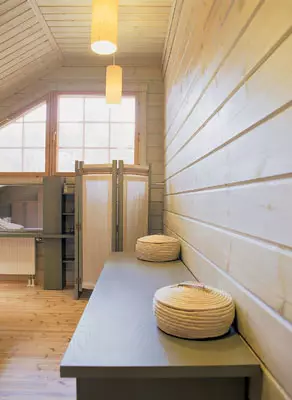
Shirma is always a riddle even for his master: something hides behind me, but not hiding completely first glance, it can hardly be called the object of furniture, it is so decorative and seemingly small. But this is not so. The word MOBIEL (furniture) comes from Mobilee- mobile, mobile. So what thing in the house is more than our heroine, worthy of being called furniture? After all, its entire essence in motion, changeability, ability to convert space. Large rooms with it are easy to divide into several zones. Aesley Room is small, Shirma, it would seem, an excess guest, because he takes some part of the area. But not only when her sash sash. The mirror screen will visually expand the space, closing the fact that you are currently seeing at the moment. Door, for example, if you want to burn out from this world's judgment. In addition, Shirma-thing is unusually delicate: will quickly disappear on the first of your requirement, since it is easy to develop and in such a state it takes quite a bit of place. She is always a mystery, even for its master: Something hides behind me, but does not hide completely, especially if it is made with forging, weaving or carving elements. Master of intrigue, Shirma is essentially akin to a skillful flirt. A half-sleeved silhouette for its transparent flaps and a slightly audible rustle excite interest, excitement of imagination, make you listen, hopping breathing ...
Judge if the screen is tightly tightened with coarse skin, it's still not a wall, but only the imaginary obstacle.
Her name, place of birth and path of migration
In Russian, the word "Shirma" came from German, in which Schirm is a shield, screensaver, barrier. In French, it is called ECRAN, which denotes a certain impressive object, blinking another, non-primable. Wangli Our heroine is present as Skreen.
This exquisite subject appeared in VII. in China. There used the screen of various sizes: from large placed in the halls to miniature desktops. They could consist of an innumerable amount of sash, but six- and eight-eyed were the greatest distribution. Each Chinese Shirma's sash was a wooden or bamboo frame, tightened on both sides with painted or embroidered silk, and later, paper or a parolh. They painted their mascara, decorating landscape motifs, calligraphy, poetic inscriptions. To create shirm used lacquer equipment. In this case, they were a lacquer panel, inlaid by pearl, colored stones or shells. By the way, the lacquer technique "Nasiji" ("pear skin") is an extremely laborious process. It is in the room there is a piece of gold foil into an array of varnish (viscous coating of a sumal resin) at different depths. On the surface can be created up to thirty lacquer layers. So the masters sought an exquisite flickering. Listed ways of manufacturing the screen (in Chinese, it is called Fii or Pendphen) became traditional and used to this day.
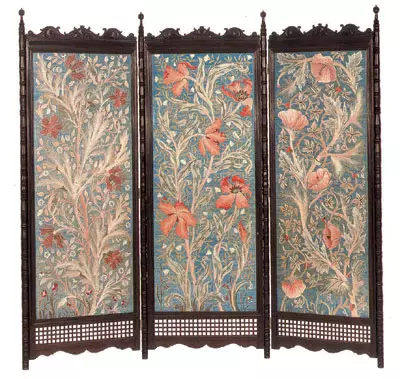
(Moscow) Evropus Shirma falls into the XVIIIV., Together with the fashion for all Chinese, when the mercenary taste of the Europeans, in search of grace and grace, turned to Eastern exotic. The owners of modern interiors performed in the Spirit Rococo may be interested to know that to create a more solid and completed interior in this style in XVIII. Specially purchased Chinese screen in their lacquer or made of the so-called wall paper, which was a wonder. It was then that all sorts of stylization of Chinese Shirm arose, using popularity to this day. In the Russian market, it is easy to find traditional shirms brought from China or manufactured by the same principle in Russia.
However, back to our historical excursion. Looking Shirma moved to VIIIV. And, by virtue of the features of Japanese architecture, they remained one of the main decorations of the room for a long time. The style of painting has slightly changed in accordance with the traditions of the country of the rising sun. So there were a kind of collection of paintings and graphics. Remember the sophisticated screen of Ogat Corin "Irises". Today, the traditional Japanese screen (Beb) is called a simple and laconic wooden design with filling from rice paper. In addition, the Japanese with all grace expressed the connection of the screen with the architectural forms of the house, since their proportions are always interrelated.
At the beginning of the XIX beginning of XXV. The era of the preemptive influence of Japan has come in European art. And in the interiors, painted screen in Japanese execution appeared in the interiors of ar-nouvo (modern). I must say that they fascinated not only by the Japanese. Traditional landscapes and licking of hieroglyphs on the sash inspired to the creative search of Toulouse-Lotrek, Degas, Van Gogh, and a little later and Mark Stegal. There is also a lot of interiors made in the style of ar-nouveau, where the Japanese screen and today will also come to Japanese Shirms today. AB XXV. They were able to promote famous designers to create the most unexpected interpretations. Such is, for example, Shirma from the Memphis collection of the Italian designer Ettor Sottsassass, playing the role of the bookshelf, or the famous Shirma Philip Stark.
It should not be noted that the screen has long passed and acquired national traits in the countries of the Middle and Middle East. For example, today is an active element of any interior performed in Indian style. Developing masters used, as a rule, valuable wood breeds. Indian products from teak with openwork through threads are truly unique, where the natural beauty of the tree is emphasized by polishing.
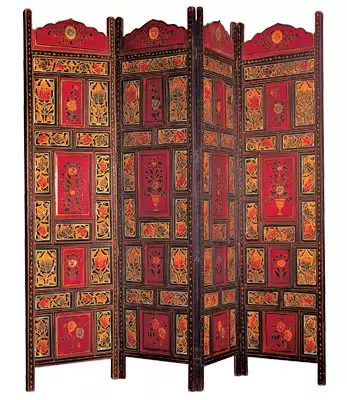
Ornamented Shirma from the "Interiors Maharaji" gallery Winteriers Maharaj also used species decorated with colored varnish miniatures with images of people, flowers and fruits. Characteristic samples of polished wood with a thread, a strip of a large drawing and inserts from a metal in the form of a stylized sun or flower.
Despite the fact that the European tradition is equally calling on the east of all motives from neighboring to Far Eastern, it is impossible not to share these influences on their belonging to those or other cultures. It is easy to notice that the screen of Japan, China or India differ quite significantly from each other. Nevertheless, objects from the eastern countries in most cases are combined with the word "ethnic", and the interiors of Thailand, India, Vietnam, Malaysia, Indonesia, Burma and the Philippines are increasingly getting the name "Colonial Style". By the way, relevant today.
Knowledge of the elements of the decoration characteristic of the listed countries will help reproduce the "clean" style at home or create a "fusion" interior with exotic engines, or, in any way, Ethno elements. You can not eclectically, but fine and exquisitely quoted, carefully and not accidentally select the necessary from Japanese, Chinese or, say, Indian interiors. With taste Completed Shirma is able to "warm" any room. It will create a complete and harmonious ensemble, supporting the object falling out of the overall stylist, but the beloved of the owners or, on the contrary, will enter the casual and cold interior a light dissonance and notch intrigue.
Its multipoint
And now we turn to the design of the screen, or, in the language of scientific, to its descriptive analysis. The folding product may consist of two or more sash, the standard width of which is 40-60cm, and height is 150-180cm. Between themselves, they are usually sealed with loops, metal rods or hinges. The frame may be metallic, wooden, bamboo, rathang or made of ventilated vine. Away its filling is used by a variety of materials: all listed above, as well as ordinary and stained glass, mirror, mirror plexiglass, cellular polycarbonate, paper, cloth, skin, paper twine, and even plants. But let's start in order.

You can order a wrought-iron shirma designed for your home, for example, at the Russian Forging Enterprise ($ 90-250 for 1 m). The product, forged on the French manner, offers Athezza (France, 352, size 120180cm). A four-section model "Fauna" from Philippines (Enpekei International, 35028rub.), Made of painted metal using a chasing, will help to the interior of the bright ethnic element. Punching of the ornament Here are images of riche birds, plants, month and sun. Forged Shirma-Screen from Indian Kuznetsov with an animal silhouette will cost you 10250 rubles. Amalny wrought iron shirma from India costs 3500 rubles. Fans of colorful African motives Lumi Collection (Russia) offers a three-section wrought-iron shirma, each section of which is a screen and can be used independently. Its internal filling is made of rafia tissue, manually woven with palm fiber, with a nasty African ornament (the cost of each section is $ 500). It makes sense to pay attention to the forged shirma in Chinese from Danhvi (10850 rubles). Extremely interesting and inexpensive products are elegant with paper twinelands (Fuzhou, China, 5000rub.).
Wooden shirma - The option is lighter, and therefore they are much more convenient when moving. The frames can be connected to each other with a glue, corners or spikes. The fabric, paper or skin is attached to the frame, as a rule, using glue, adhesive tape or nails. Decorative cloves can clog the hat to a hat, which creates an additional decorative effect. As an example, you can bring a wooden screen with a leather filling from Danhvi (cost- 17000rub.).
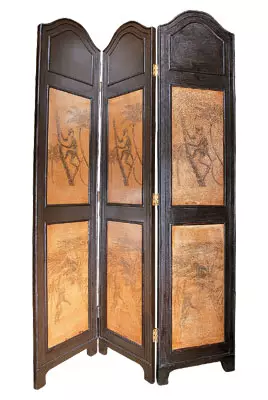
Double-sided three-range shirma depicting monkeys from the ATHEZZA. A typical example of the decor in the style of "Fusion" in many cases, only a frame is made by wooden. For example, Fujian Minqing (China) offers for 20,000 rubles. Shirma with wooden frame, metal firming inserts and leather filling. Furniture Furniture "Drem" (Moscow) produces models designed specifically for bedrooms. The frame here is made from a natural beech, and the inner space is filled with rattan ("rattan" model, 30000 rub.), Cloth or leather. If you wish to buy a screen with textile filling, it will cost you depending on the cost of the material, in 9000-21500 rubles. Moreover, the design of such products allows you to remove the fabric to replace it with another or simply clean. By the way, this company provides a guarantee for similar products to 36 months.
Stamming that shirma on roller wheels is most convenient when moving, it is difficult to agree difficult. Models of this kind of wood produces Business Nova (Moscow). Filling at the same time may be different, the cost of products is from $ 300.
We recommend paying attention to both painted wooden shots. For example, an eastern style with the image of the monkey offers ATHEZZA (470). Indian wooden products painted with floral paints, with the image of birds, colors, human figures, stand from 4500 rub. (Little tabletop instance) to 45 000 rub. (four-party, with bilateral painting). Chinese Six-life shirma handmade from a mahogany with refined paint Tever (the plot is traditional: peonies and peacocks) and the wax coating will cost the buyer at $ 3,600. Asointed in the fifties of the last century by Chinese masters, covered with black varnish and inlaid by diverse stones will cost $ 1200. Products decorated with painted and sophisticated carvings, manufactures Fujian Minqing (13 500 rubles). Eastern luxurious, completely carved Thai teak shirms depicting grapes, colors and birds cost $ 1700-2100.
Other if you yourself came up with some extraordinary model, you will be helped to make a dream in the "Creative Workshop of Alexandra Matilina". However, to get something out of a series of outgoing and correctly pick up a style of style by style, pushing designers, the payment of the arrival of which will enter the cost of the future order (from $ 200 for 1 m). As for ideas, they are simply an incredible amount. List only some. For interiors in the classic spirit, the screen can be decorated with a BALASIN group, for cautious premises to provide comfortable straps for tissue canvas with Kuliska, as well as all sorts of tits and strategies. Daily dwelling will be quite organically the model will look like, combining broken sash. Shirma with painting acrylic patterns in the modern style styled with a noise-absorbing cork coating on the reverse side. It serves to separate the home theater zone from the total living room space ($ 3,600 for two four-dimensional models). True find for home theater cinema-width. It will help to hide cables, wireless wires, cover from all sides, unsightly details of a technical nature. Silk painting can be performed on a freeze theme, with quotes from well-known picturesque works or copies of Alphonse Fly, for example, "Seasons". It looks implicitly the bivalve shirma filled with a banner cloth with a pattern copied from the Japanese XVIV sample. and applied with a printer ($ 1900). The highest product from this workshop (230cm, by the way, we do not recommend ordering above, otherwise the design will become life-threatening) withstanding in the Mediterranean style: sash resembling Roman shutters seem to be sash and weathered salted air.
And now a few words about wicker shirms. . It's no secret that one of the main advantages of "knitted" furniture is lightness (its weight is almost twice as smaller than the easiest wooden). In addition, such screens will help to quench the thirst for ecological purity, entering an element "ecosil" to the interior. Rattan products often come to us from Asia, from major suppliers - Malaysia and Indonesia. There, almost in each village there is a small factory, where weaving furniture objects are made manually. By design, these models tend to repeat the traditional products of the colonial style.
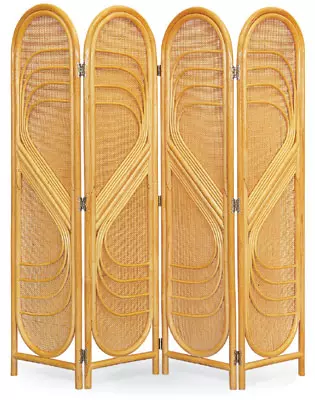
The four-part Shirma with filling out of rathana settings are good because they have a minimum amount of joints, since the rattan (tropical liana) can reach 200m. Today, furniture from this material is again extremely popular and is considered an attribute of a beautiful life. Indonesian-made scribed from Penjalindo factory (Collection Olimar) can be purchased for $ 245 (3 sash, the size of each- 45160cm). Somewhat more expensive ($ 326) four-part model from the same collection (size one panel - 40160cm). Four-grade shirma from rattan (size 50190cm) nut, honey or olive color from the Victoria collection will cost you $ 517.
Yves vine use, as a rule, Russian and Ukrainian manufacturers. Such products have a greater amount of joints than similar rathana, but they are much cheaper. The same IV rods are not afraid of moisture and have a beautiful natural amber tint. Such screen offers the company "Russian yard" (Moscow), their cost is from 3500 rubles. Approximately the same is the products made using the Yves vine and tapestry inserts. These screen are produced either with lacquer coating, or without it, which should be considered when buying. The latter can always be toned based on the color gamut of your interior, on the lacquer the same paint, as a rule, falls badly. By the way, Shirma may include several pots for home plants. A similar model from the ventilated vine, braided by a wooden frame, offers the "Industrial group of invoking" (Kirovo-Chepetsk). Price, from 6000 rubles.
Bamboo It is perfectly treated along and cut across, so products from this material may differ in a complex configuration. Four-grained Bamboo Screens (Glass Jangl), tightened by unpainted Ivanovo flax with drawings made in Silkographic technique for samples of Chinese painting XVIIV, will cost the buyer in 1000 rubles.
If you are not interested in any of the models described above, the simplest, but perhaps no less attractive email option you can make yourself at home. The necessary recommendations are contained in the articles.
"Shirma from Molton" and
"Shirma with pockets."
Ability of the perfect guest
And now let me bring some examples of using the screen in the interior. This fabulous sorceress will easily turn a small space in the bedroom or hallway into a kind of dressing room, where everything will depend only on your imagination and ingenuity. On one of the flaps you can put a mirror, to another, decorated like a Swedish wall, conveniently hang scarves and ties, it makes sense to fasten the hooks for clothes. If the sash is left in the form of frames with crossars, located at an equal distance from each other, and in some places to lay the shelves on the crossbar, it will be a comfortable design for storing things. It is easy, mobile and if desired, it is easy to dismantle. KSLOV, the idea of using the screen for placing clothes is not not new - in Japan, such a form has a hanger for kimono.Gostoyous Shirm, hiding the desktop, helps create a cozy office. For such a case, it is likely to need its option with all sorts of pockets for favorite magazines, catalogs and booklets. An indispensable shirma and in the nursery, where, you see, you will never be superfluous pockets for the smallest things, as well as the ability of the structure to divide the room into zones, such as game and sleeping. In addition, it is easy to separate the kitchen from the dining room. Aesl attach to the shirma hooks, it will be convenient for it to hang out all sorts of utensils, which will always be at the right moment.
Our heroine can turn into an original photo album if you have a historically important photo. Asseta in her power - to symotize a fragment of a garden gazeboo, I was spinning ivy and wild grapes. This case is better to use artificial plants. Such a screen can be made independently or order in a firm specializing in floral design.
Small models sometimes use instead of curtains, putting them on the windowsill. AB Former times, such shirms covered with dense cloth were used to protect against drafts. Located behind the back wall of the aquarium and decorated with elements of the underwater landscape, the small screen will be invisible for double glass and the thickness of water, but will help to avoid difficulties when cleaning the aquarium.
However, the heroine of our narrative is capable of performing not only the simplest utilitarian functions. The method of Feng Shui, for example, recommends to close the dwelling staircase, if it is located next to the entrance door, which will prevent the output of the energy of qi.
Her distant relatives
Shirma is not only unique in itself, it was still a prototype for a variety of other useful interior items. According to her, it is manufactured, for example, doors and shutters, fixed vertically and folding harmonica.
Despite the fact that the conversation today is devoted to Shirma in its traditional variant (lightly portable design), and stationary models should be mentioned. They have a kind of flat screen, can be any width, do not reach the ceiling height, separate one part of the room from the other, but they are attached to the floor and, naturally, do not fold, even if you wish it very much.
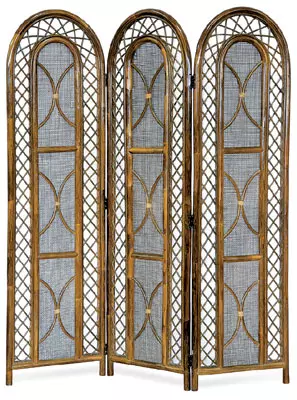
The SWIRM function is also performed by panels made of tissue stretched inside the aluminum frame, which moves along the guides (NF-Studio, Moscow, the frame from the German company Al-Designhaus, the cost of 1 piece- from 190, the cost of 1 m. M guide- 87 Plus the cost of the fabric). Fastening in this case can be both wall and ceiling.
Shirms are sometimes called Japanese panels used as curtains on the windows and, again, for zoning space. They are straight fabric linen with a width wide no more than 1m with a weighting agent at the bottom, moving along the guides attached to the ceiling. If necessary, the panel can be folded into a dense roll and fixed at the desired height using decorative cords and tapes (NF-Studio, the price depends on the cost of the fabric). But this, as we see, is already a completely different story. So such items can be called rather "theses" screen in the usual understanding of this word ...
The editors thanks the artist on Silk N. V. Alekseev, "Creative workshop Aleksandra Matilina", Enterprise "Russian forging", NF-Studio, "Gallery of interiors", gallery "Digri", "Zen Art", "House 14", Grange, "Interiors of Maharaji", Lumi Collection, Stores Store-Salon, Ommar, Strigin Art, Business Nova, Russian Dvor, Glass Jangl, Taiwood, Furniture Factoria "DREME", Industrial group "Correspondence", the East Tea Club for help in the preparation of the material.
